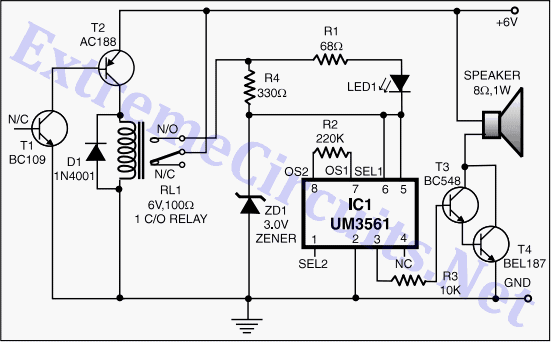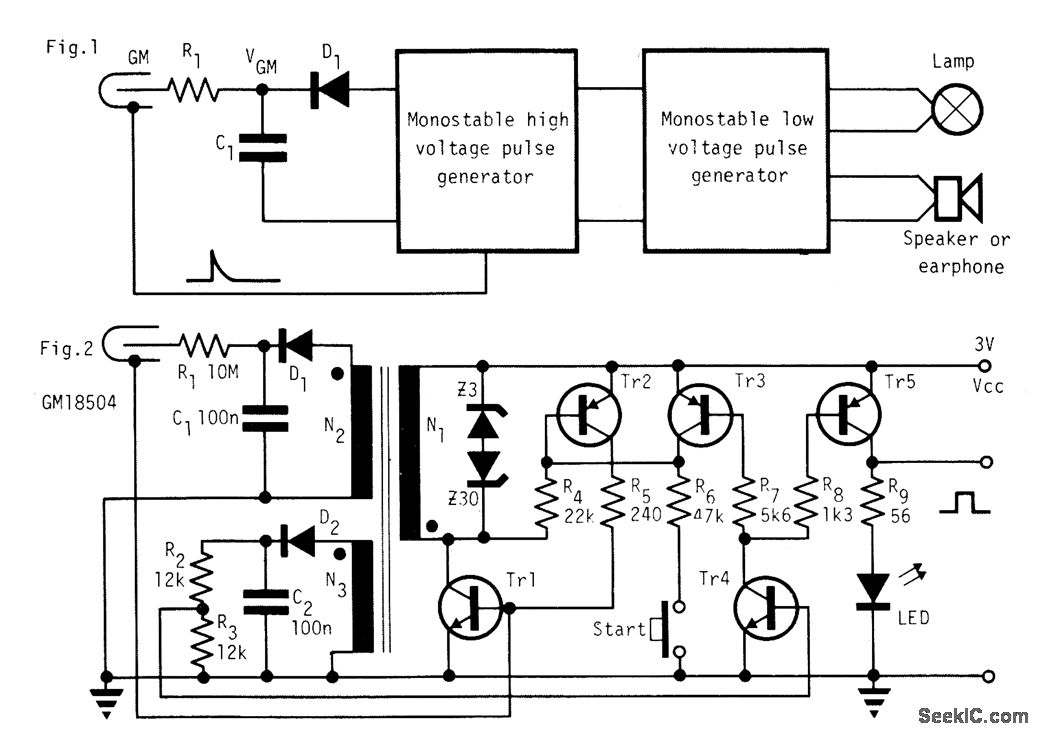
DIY Metal Detector Project

The core component of this DIY metal detector circuit is the CS209A integrated circuit (IC). The metal detector is constructed using a single 100µH coil, which has a diameter of 40 mm.
The CS209A IC serves as the primary signal processing unit in the metal detector circuit. It is designed to detect the presence of metallic objects by measuring changes in inductance caused by metal objects in proximity to the coil. The 100µH coil, which is a critical element of the system, acts as the sensor. When a metallic object is near the coil, the inductance changes, and the CS209A processes these changes to generate an output signal.
The circuit typically includes additional components such as resistors, capacitors, and a power supply, which are necessary for biasing the IC and filtering the output signal. The output can be connected to a speaker or LED to provide an audible or visual indication of metal detection.
For optimal performance, it is essential to calibrate the coil and adjust the sensitivity settings of the CS209A. The coil's placement and orientation can significantly affect detection range and accuracy. The circuit can be powered by a standard battery, making it suitable for portable applications.
Overall, this DIY metal detector circuit offers a practical and educational project for electronics enthusiasts, allowing for hands-on experience with inductive sensing and signal processing.The heart of this diy metal detector circuit is the CS209A IC. The metal detector is built with one 100µH coil that has 40 mm in diameter and is made.. 🔗 External reference
The CS209A IC serves as the primary signal processing unit in the metal detector circuit. It is designed to detect the presence of metallic objects by measuring changes in inductance caused by metal objects in proximity to the coil. The 100µH coil, which is a critical element of the system, acts as the sensor. When a metallic object is near the coil, the inductance changes, and the CS209A processes these changes to generate an output signal.
The circuit typically includes additional components such as resistors, capacitors, and a power supply, which are necessary for biasing the IC and filtering the output signal. The output can be connected to a speaker or LED to provide an audible or visual indication of metal detection.
For optimal performance, it is essential to calibrate the coil and adjust the sensitivity settings of the CS209A. The coil's placement and orientation can significantly affect detection range and accuracy. The circuit can be powered by a standard battery, making it suitable for portable applications.
Overall, this DIY metal detector circuit offers a practical and educational project for electronics enthusiasts, allowing for hands-on experience with inductive sensing and signal processing.The heart of this diy metal detector circuit is the CS209A IC. The metal detector is built with one 100µH coil that has 40 mm in diameter and is made.. 🔗 External reference





